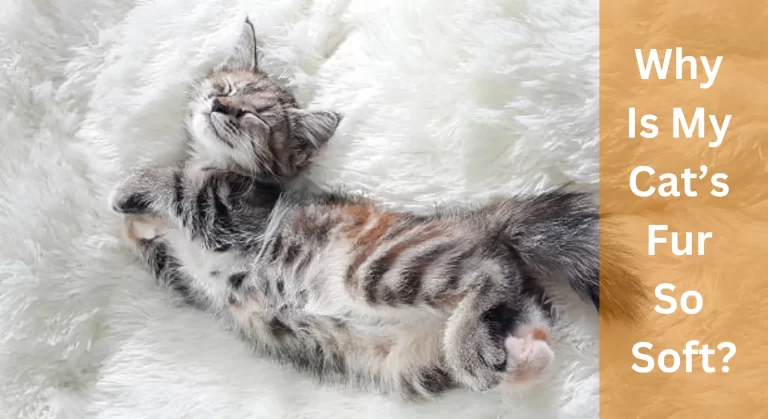Male Cats Vs Female Cats Pros and Cons: Everything
One of the first crucial considerations you must make when getting a new cat or kitten is whether to choose a male or female cat. Although both genders share many common traits, a few distinct characteristics set them apart.
Male cats Vs female cats pros and cons are listed here to help you decide. We compare the physical differences between the two and consider any additional considerations. Such as temperament, behavior, and health should all be considered when deciding which gender is right for you.
This article will demonstrate that choosing a sex cat is challenging without a clear winner. Depending on your tastes, a female cat can be a better fit for someone else’s home than a male cat. Even if both points merit, reading this article will make your decision easier.

Male Cat Vs. Female Cat
The basic differences between male and female cats will be discussed before we delve into the pros and cons. Generally, male cats weigh more and have larger heads and necks than female cats. They are also more muscular, with thicker bones.
Female cats, on the other hand, are generally smaller and lighter, with narrower heads and necks. As well as being more flexible and agile than male cats.
Benefits and Drawbacks of Male and Female Cats
Cats may be distinguished largely between males and females. Most of these fall under one of the following categories:
- Physical differences
- Health problems
- Behavior issues
- Temperament and character
Here is a quick review of the advantages and disadvantages of having a male and female cat for those who are short on time, which is given below.
Pros of Female Cats
| Females are somewhat smaller than males; thus, they can fit better in compact homes and apartments. |
| Female cats tend to be more independent, which is perfect for busy owners. |
| Female cats are often better hunters than male cats. They have more refined hunting skills and are more patient when stalking their prey. |
| Female cats do not spray urine to mark their territory, making them a better choice for indoor cats. |
| Female cats are less prone to aggressive behavior than male cats, especially if they are spayed. They are less likely to fight with other cats and may be more accepting of new cats. |
| Finding one is much simpler for anyone who desires one of these coat colors because most calico and tortoiseshell cats you see are female. |
Cons Female Cats
| Female cats are more distant and less connected to their owners than males. |
| Female cats go into heat, becoming highly vocal and disturbing people’s sleep if they haven’t been neutered. |
| Keeping a female cat’s fur healthy requires more grooming than a male cat. They may also require regular trimming of their nails and cleaning of their genital area. |
| Female cats don’t often get along well if they aren’t reared together as kittens. |
| Female cats that haven’t been spayed run the risk of developing ovarian and breast cancer, ovarian cysts, pyometra, and other serious conditions. |
| Since ginger cats are mostly male, finding a female one could be challenging. |
Pros of Male Cats
| Most ginger cats are male, so anyone searching for one will find their search much simpler. |
| Most of the time, male cats are nicer and more welcoming of people and their owners. |
| Male cats are usually more playful and energetic than female cats. A game of fetch or chase is always in the cards for them and they enjoy playing with toys. |
| Male cats are generally easier to train than female cats. They are more responsive to commands and can be trained to perform tricks or use a litter box more quickly. |
| It is typically easier to care for male cats than female cats because males require less grooming. Their fur doesn’t require regular grooming, and they don’t go into heat. |
| Male cats can live together contentedly if they don’t view each other as competitors. |
Cons of Male Cats
| Unneutered male cats may develop aggressive behavior against humans and other animals. |
| Male cats are more likely to wander off and explore their surroundings. They may get into fights with other cats and get lost or injured. |
| Male cats are more prone to urinate on items in and around your house and to be more aggressively territorial. |
| Male cats require neutering to prevent unwanted behavior and reduce the risk of certain health problems. Neutering can be expensive and may require additional care and attention after the procedure. |
| Males are more likely than females to experience urethral obstructions and feline tail gland hyperplasia. |
| There are incredibly few male tortoiseshells and calico cats, and those that do exist might not be reproductive. |
Factors that Affect a Cat’s Behaviour and Personality
In addition to gender, additional aspects are taken into account while determining a cat’s perspective, personality, and behavior.

1. History
Before adopting a cat, whether from a shelter or a previous owner, learning about his past can help you understand more about his personality.
For instance, the cat is most likely to be cool and collected if he is reared in a caring atmosphere. On the other hand, the cat can exhibit some antisocial qualities if he is reared in a violent home. It could be possible to save the cat, but it would take a lot of effort and time.
2. Breed
Having a purebred cat means you will know what to expect from him in terms of his personality and physical characteristics, which is one of the key advantages. Breeders uphold breed standards to preserve consistency in the appearance and temperament of their cats.
For example, the Turkish Van and Angora are widely known for their aggressive behaviors toward people and cats. Conversely, one of the least aggressive cat breeds is the British Shorthair.
Also Read: Differences Between Devon Rex and Cornish Rex Cat
3. Environment
Just as humans are not fate, neither is nature. This only suggests that your cat’s surroundings may affect his behavior and attitude. In fact, cat experts believe that a cat’s immediate environment influences its personality most. In a similar line, environmental regularity affects a cat’s well-being.
If there are frequent or large environmental changes, you’ll notice a difference in your cat’s behavior. For instance, if your home is usually calm and you host a party, your cat—typically quiet and reserved—might hide out for a few days.
Cat Appearance: Male vs Female
The breed you choose will probably impact your cat’s appearance more than its sexual orientation.
Cats typically stand between 8 and 10 inches tall and weigh anything between 6 and 12 pounds. Male and female cats can occasionally differ slightly in size, although the difference is barely noticeable.

1. Male Cats are Bigger, Whereas Female Cats are Smaller
Size is an essential factor closely tied to sex when purchasing a cat. Male cats are nearly always larger and weigh about 12 pounds, whilst female cats are typically shorter in height and weigh around 10 pounds.
The true challenge is finding adequate space in your home for your cat’s equipment, even if it doesn’t matter.
For instance, male and female cats don’t always need the same space. However, you must make a place in your home for larger cat trees, litter boxes, beds, and other equipment. Therefore, if you live in a small flat, you should choose a smaller female cat.
Personality and Temperament
While every cat has a unique personality and temperament, some male and female cats display fairly similar behaviors. However, there are certain typical differences between the sexes that you may expect.
Remember that these generalizations are more prevalent in male and female cats who have not had neutering or spaying, respectively.

1. Male Cats that Haven’t been Neutered are more Daring
Males that have not been neutered generally have a far greater desire to explore than females. They constantly look for a mate and will travel great distances to find a female in heat.
Male cats typically leave the house far more than female cats do, which causes them to encounter more difficulties outside of the home. Consequently, it would seem that the anxious owner would benefit more by obtaining a female cat.
Interesting Reading: When Do Male Cats Go Into Heat?
2. Unneutered Male Cats are More Aggressive
Although male cats are thought to be kind and gentle, they may sometimes be very violent. Usually, if your male cat has not been neutered, this will only be a serious problem.
As they become older, kittens’ sex hormones may make them aggressive toward neighborhood cats that they see as violating their territory. In extreme cases, they could even start behaving violently against their owners!
Check Out: Can a Neutered Male Cat Still Get a Female Pregnant?
3. Male Cats are more Affectionate
Generally, male cats seem far more affectionate toward their owners than female cats. This is a major advantage if you want a cat with whom you can genuinely form a deep bond or have a busy home with small children.
They are highly accepting of others and will value all the affection and time you give them. However, people who lead busy lives and have little free time to spend with their furry companions may find this neediness to be a disadvantage.
4. Female Cats are More Independent as a Gender
But female cats are typically far more independent than male cats. They are consequently frequently selected by those who live busy lives. Your female cat should be able to keep herself entertained when you’re gone from the house or engaged in other activities.
But because of this, female cats’ bonds with their owners don’t often continue as long. This may result from the perception that female cats are less affectionate and more unpredictable than male cats.
Interesting Reading: Do Female Cats Prefer Male Humans?
Male and Female Cat Coat Colours
The color of a cat’s coat may differ depending on its sex. Know that male or female cats are far more likely to have pigments like black or orange than other colors like tortoise-shell if you’ve been experiencing nightmares about a tortoiseshell cat.
In the case of ginger cats, 75% of them will be male. If you do not include male cats in your search, your chances of finding a female ginger cat are substantially lower than if you are determined to locate one.
On the other hand, Calico cats are far more likely to be female than male. A male calico cat is actually 1 in 3,000 likely to exist!
Health Concerns
Although it’s a somber topic, it’s crucial to consider any potential health issues prior to buying a male or female cat. It’s crucial to remember that having your cat spayed will stop most of the health problems that affect females. Neutering male cats can reduce the health hazards they face, but it does not completely eliminate them.

1. Urethral Obstructions are More Frequent in Male
Urinary tract infections (UTIs), which cause blood in the urine and painful urination, can affect both male and female cats. However, compared to female cats, male cats have longer, thinner urethras.
As a result, people are far more likely to get urethral blockages due to the size and shape of this little canal.
2. Cysts, Cancers, and Pyometra in Female Uteri
Female cats are more likely than male cats to suffer from illnesses or conditions that damage their reproductive systems. Among the frequent issues are uterine cysts or tumors, pyometra, an infection of the uterine lining, and ovarian and breast cancer.
All of these conditions are rather serious and may even pose a threat to life, demanding long-term treatments like surgery.
3. Feline Tail Gland Hyperplasia Affects more Males
Another common issue that is more common in cat males is feline tail gland hyperplasia. The gland at the base of the tail secretes too much sebum, which causes the condition commonly known as stud tail. Your cat’s tail can possibly be emitting an unpleasant odor.
Regular shampoo use could keep sebum levels in check. After neutering, the symptoms may perhaps disappear, although this is not a given.
Frequently Asked Questions
Is it better to get a female or a male cat?
There is no definitive answer to this question, as every cat is unique and has its own personality. It is best to choose a cat based on its individual temperament and behavior rather than gender.
Additionally, it depends on your personal preferences and lifestyle. Consider factors such as the amount of time you have to dedicate to your cat, the environment in which they will be living, and whether or not you plan to have them neutered or spayed.
Are female or male cats more loving?
Again, this depends on the individual cat. While some people may perceive female cats to be more loving and affectionate, male cats can also be very affectionate and loving toward their owners.
However, male cats are often more outgoing and sociable, while female cats are generally more calm and gentle. Prior to making a decision, take the time to get to know a potential pet’s personality.
Is a male or female cat better for indoors?
Both male and female cats can be good indoor pets as long as they are provided with plenty of toys, scratching posts, and other forms of entertainment.
However, it is important to note that male cats may be more prone to territorial behavior and urine marking, which can be a problem in smaller living spaces. Neutering can help reduce these behaviors in male cats.
Furthermore, female cats may be a better choice for indoor cats as they are less likely to spray urine to mark their territory, which can be difficult to control indoors.
Are male or female cats more loyal?
The idea that one gender of a cat is more loyal than the other is a bit of a myth. While some cats may be more naturally affectionate and attached to their owners, it comes down to the individual cat’s personality and experiences. Some male cats can be extremely loyal and affectionate, while some female cats may be more independent.
Do male cats roam more than females?
Yes, Wandering and roaming away from home is more common among male cats.
Do female cats spray?
Female cats do not spray to mark their territory like male cats, but they may go into heat cycles which can be messy.
Is it necessary to spay or neuter your cat?
Yes, It is recommended by veterinarians. that you spay or neuter your cat to reduce the risk of health issues and territorial behavior.
What kind of cat is the most cuddly?
Again, the level of the cuddliness of a cat will depend on its individual personality. Nevertheless, certain breeds, such as Ragdolls, Persians, and Siamese cats, are well known for their affectionate and cuddly characteristics.
Additionally, cats that have been raised in loving and social environments from a young age are more likely to be cuddly and affectionate with their owners.
Final Words!
As you can see, contrasting male cats with female cats have many advantages and disadvantages. However, the aforementioned generalizations should be understood as two men may differ significantly in terms of their personalities, physical characteristics, and aesthetic tastes. The same regulations apply to women as well.
As a result, how you interact with and integrate your cat into your family is vitally important. Whatever sex you choose, your cat will be an excellent addition to your home!
Related Posts:
- Cat Myths And Misconceptions: Know The Truth
- Why Felines Prefer Females Over Males?
- What Do Cats Think About All Day?
- Why Are Cats Called Pussy Cats?
- What Do Cats See When They Look at Humans?
- Why Do People Hate Cats?
- Why Are Cats Not As Friendly As Dogs?
- Do Cats Understand Words?
- Why Are Cats So Stupid? Is My Cat Dumb?
Who is Isabella?
My name is Isabella, and I am a dedicated and knowledgeable cat enthusiast. With years of experience caring for cats and a deep love for felines, I made a mission to help other cat lovers navigate the challenges of cat ownership.






